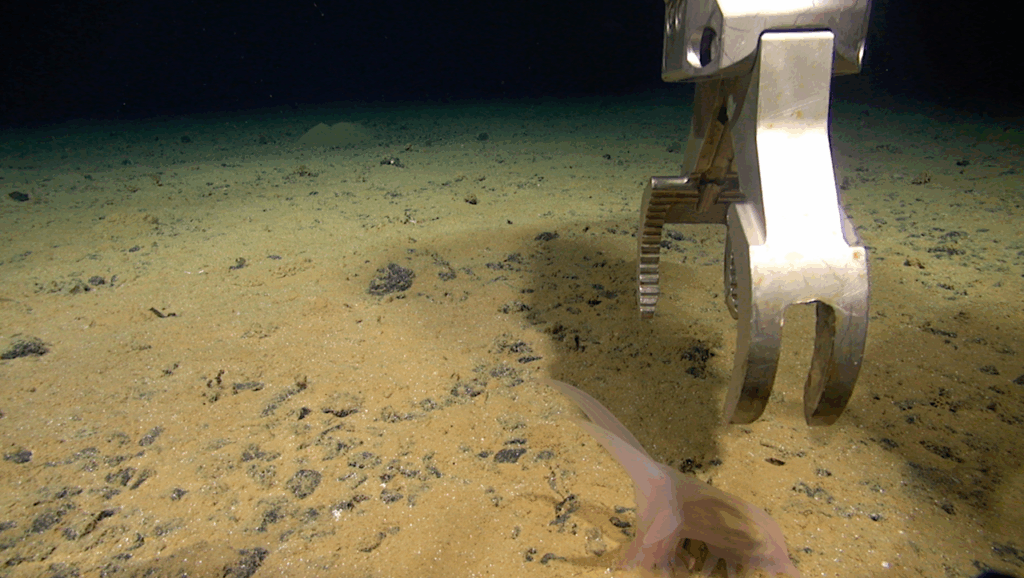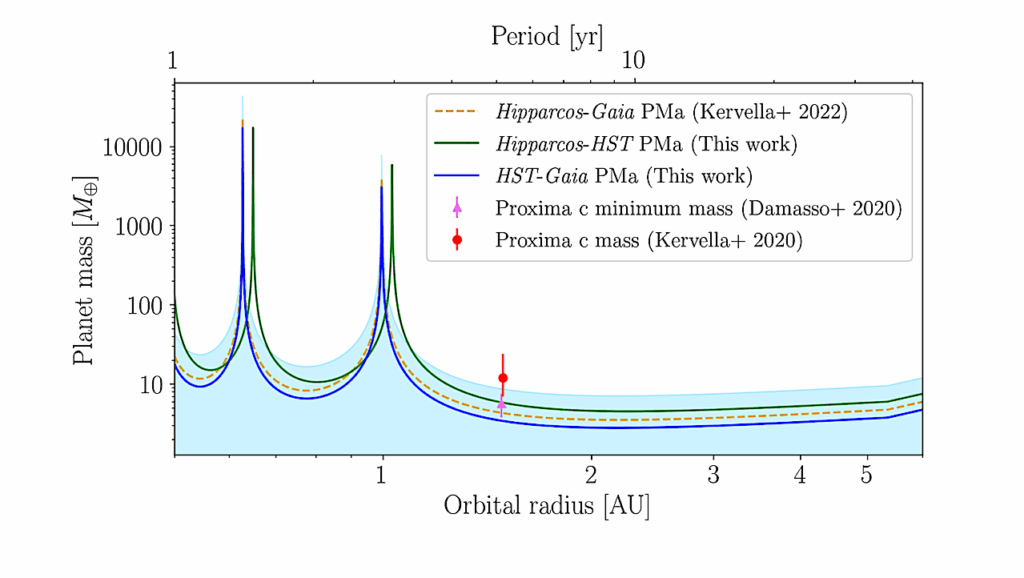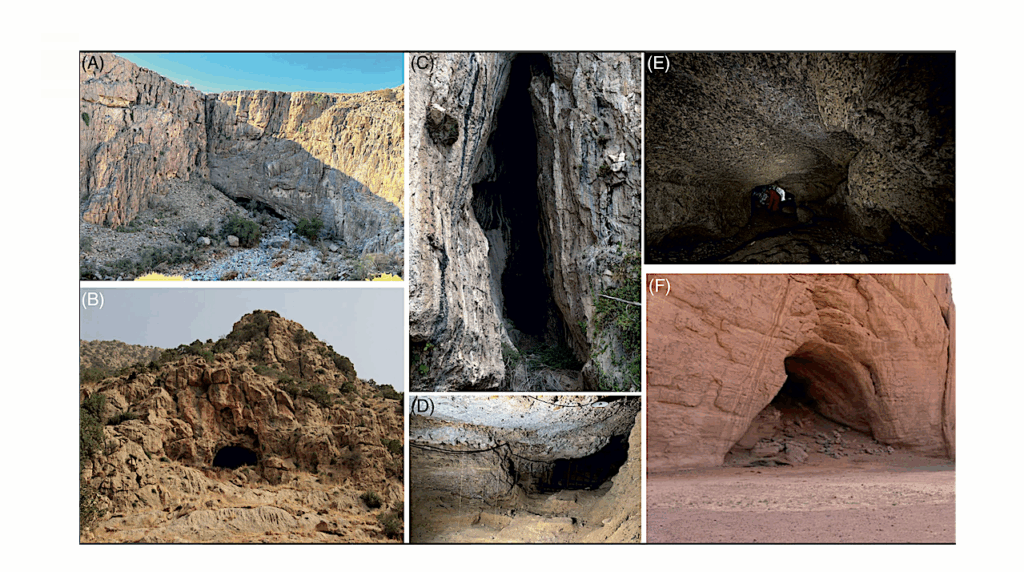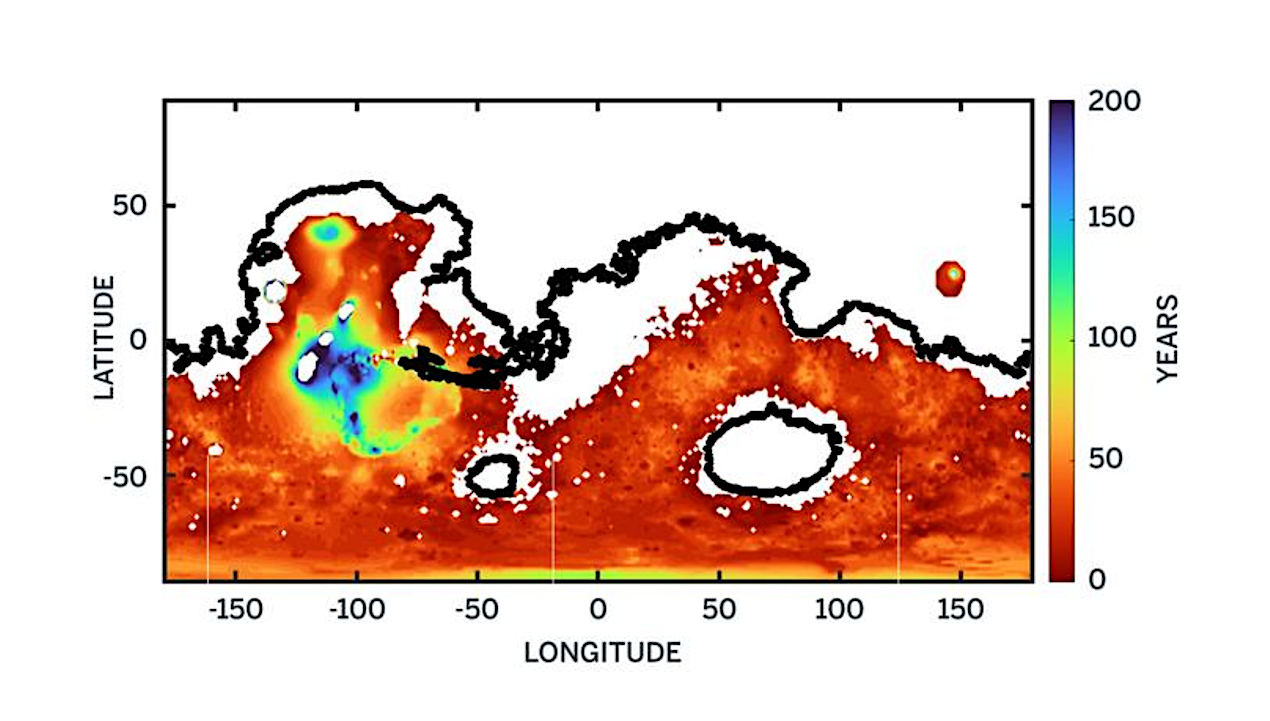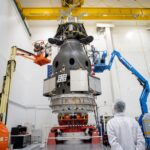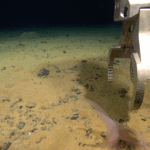Now Reading: VUV Processing of Nitrile Ice: Direct Comparison of Branching in Ice and TPD Spectra
-
01
VUV Processing of Nitrile Ice: Direct Comparison of Branching in Ice and TPD Spectra
VUV Processing of Nitrile Ice: Direct Comparison of Branching in Ice and TPD Spectra
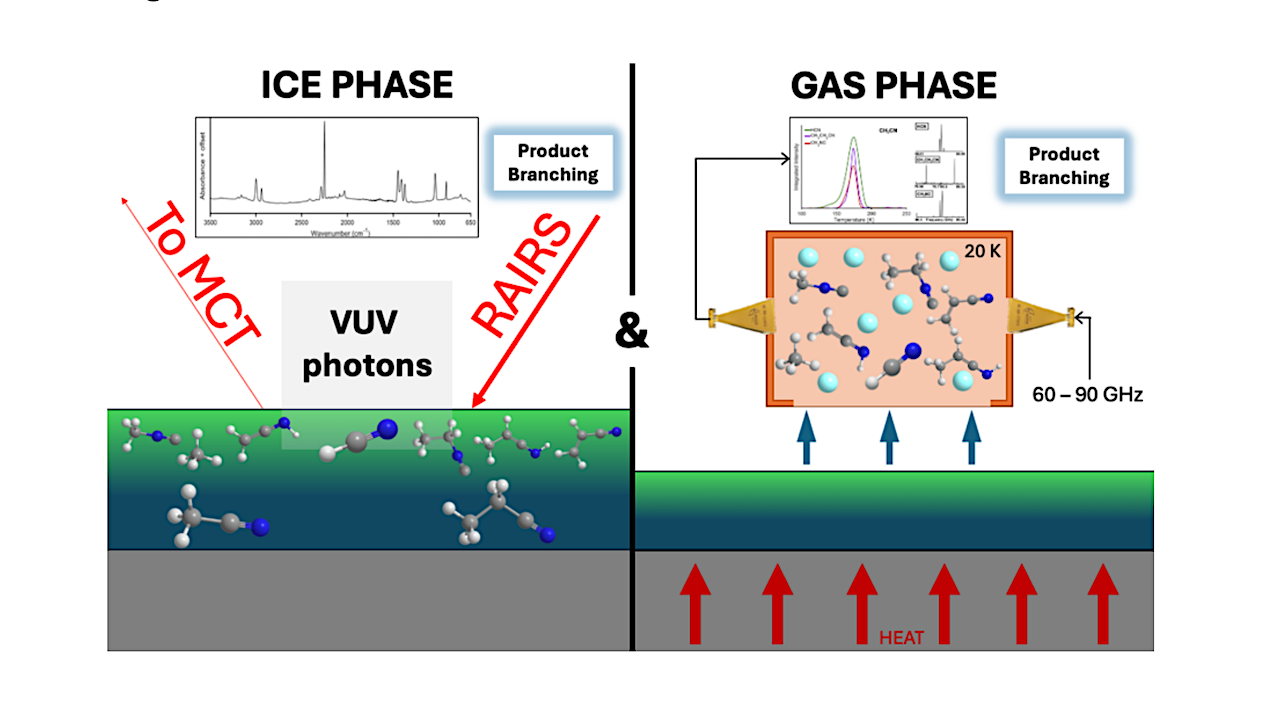

Graphical abstract — astro-ph.GA
The interplay between radiation chemistry and sublimation dynamics of condensed organic compounds on cold grains is fundamental to describe observed gas-phase and ice-phase molecular abundances in the ISM.
Infrared measurements are generally used to identify molecules synthesized in irradiated ices in lab experiments, while mass spectrometric techniques have been used to monitor the products following temperature programmed desorption. The IR measurements are often used quantitatively to monitor chemical transformation of ices during the course of irradiation, but the gas phase methods applied with TPD generally do not permit quantitative branching determination.
Here we combine reflection-absorption infrared spectroscopy (RAIRS) of ices with broadband rotational spectroscopy of the sublimed products, to study the branching of photoproducts produced by the VUV irradiation of condensed CH3CN and CH3CH2CN ices. This permits direct comparison between the ice-phase and gas-phase branching following temperature programmed desorption.
This comparison is analogous to astronomical observations of ices in protostellar disks such as by the James Webb Space Telescope employed in conjunction with ALMA observations in the corresponding warm-up regions of the same objects. In the condensed CH3CN VUV processed ices we quantified the HCN, CH3NC, CH2CCNH, CH3NH2, and CH4 abundances.
The CH3CH2CN ices also readily produced the corresponding isocyanide and HCN in addition to a significant yield of CH2CHCN. The ethyl cyanide ice produced CH3CHNH rather than CH3NH2 and no CH4 formation was observed. In the gas phase we detected the isocyanides, HCN and vinyl cyanide.
The ice and gas phase relative abundances could be brought into agreement if the unknown IR band strength of the isocyanides C-N stretch is assumed to be ~3 times larger than that of the cyanides.
Top-down schematic of CPICE with labels in the RAIRS measurement configuration. –astro-ph.GA
Travis J. Hager, Bailey M. Moore, Quentin D. Borengasser, Kyle T. Renshaw, Rachel Johnson, Anudha C. Kanaherarachchi, Bernadette M. Broderick
Subjects: Astrophysics of Galaxies (astro-ph.GA); Instrumentation and Methods for Astrophysics (astro-ph.IM)
Cite as: arXiv:2505.09888 [astro-ph.GA] (or arXiv:2505.09888v1 [astro-ph.GA] for this version)
https://doi.org/10.48550/arXiv.2505.09888
Focus to learn more
Submission history
From: Bernadette Broderick
[v1] Thu, 15 May 2025 01:12:47 UTC (1,211 KB)
https://arxiv.org/abs/2505.09888
Astrobiology, Astrochemistry,
Stay Informed With the Latest & Most Important News
Previous Post
Next Post
-
 012024 in Review: Highlights from NASA in Silicon Valley
012024 in Review: Highlights from NASA in Silicon Valley -
 02Panasonic Leica Summilux DG 15mm f/1.7 ASPH review
02Panasonic Leica Summilux DG 15mm f/1.7 ASPH review -
 03From Polymerization-Enabled Folding and Assembly to Chemical Evolution: Key Processes for Emergence of Functional Polymers in the Origin of Life
03From Polymerization-Enabled Folding and Assembly to Chemical Evolution: Key Processes for Emergence of Functional Polymers in the Origin of Life -
 04How New NASA, India Earth Satellite NISAR Will See Earth
04How New NASA, India Earth Satellite NISAR Will See Earth -
 05And Thus Begins A New Year For Life On Earth
05And Thus Begins A New Year For Life On Earth -
 06Astronomy Activation Ambassadors: A New Era
06Astronomy Activation Ambassadors: A New Era -
07SpaceX launch surge helps set new global launch record in 2024












